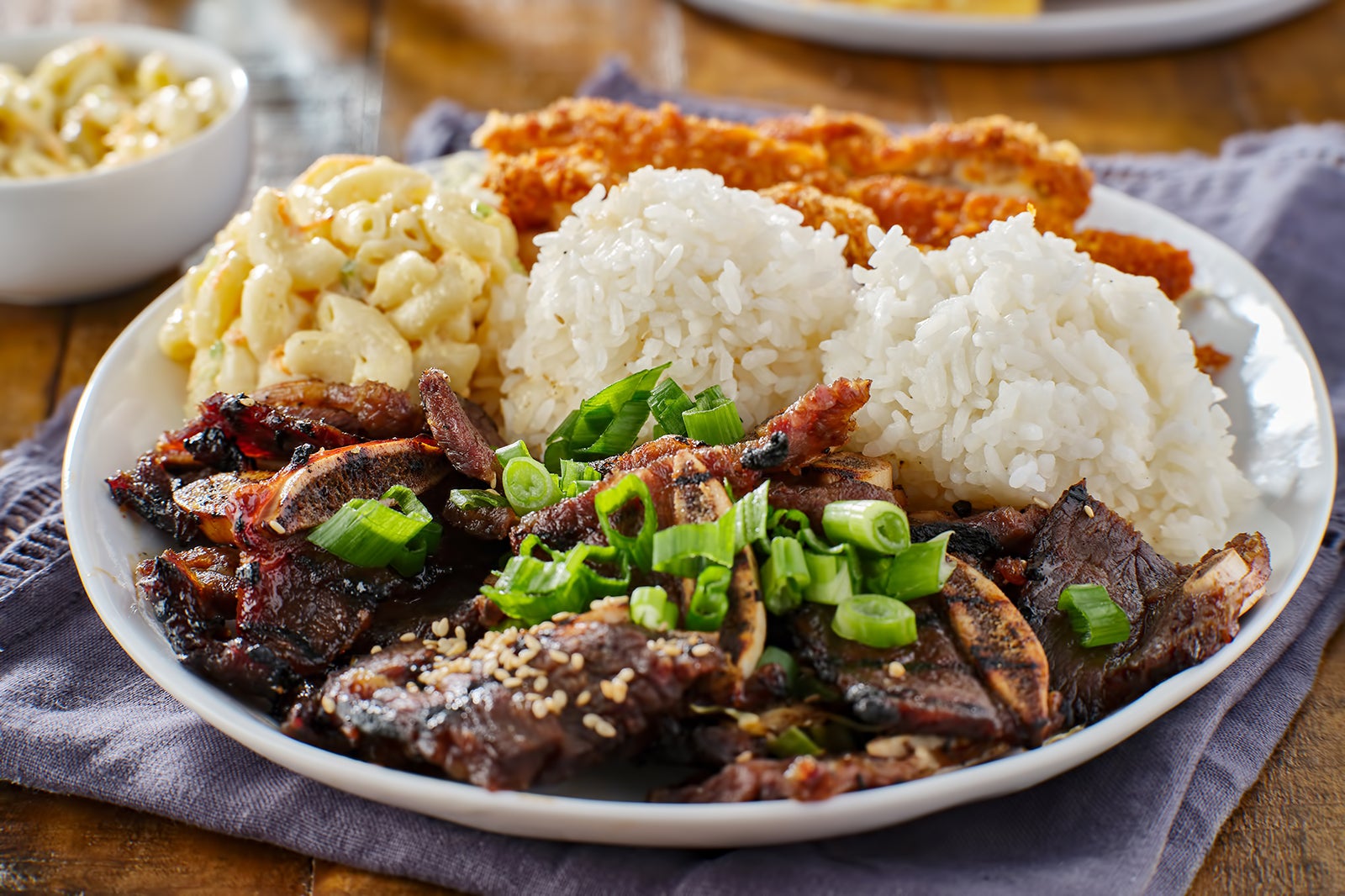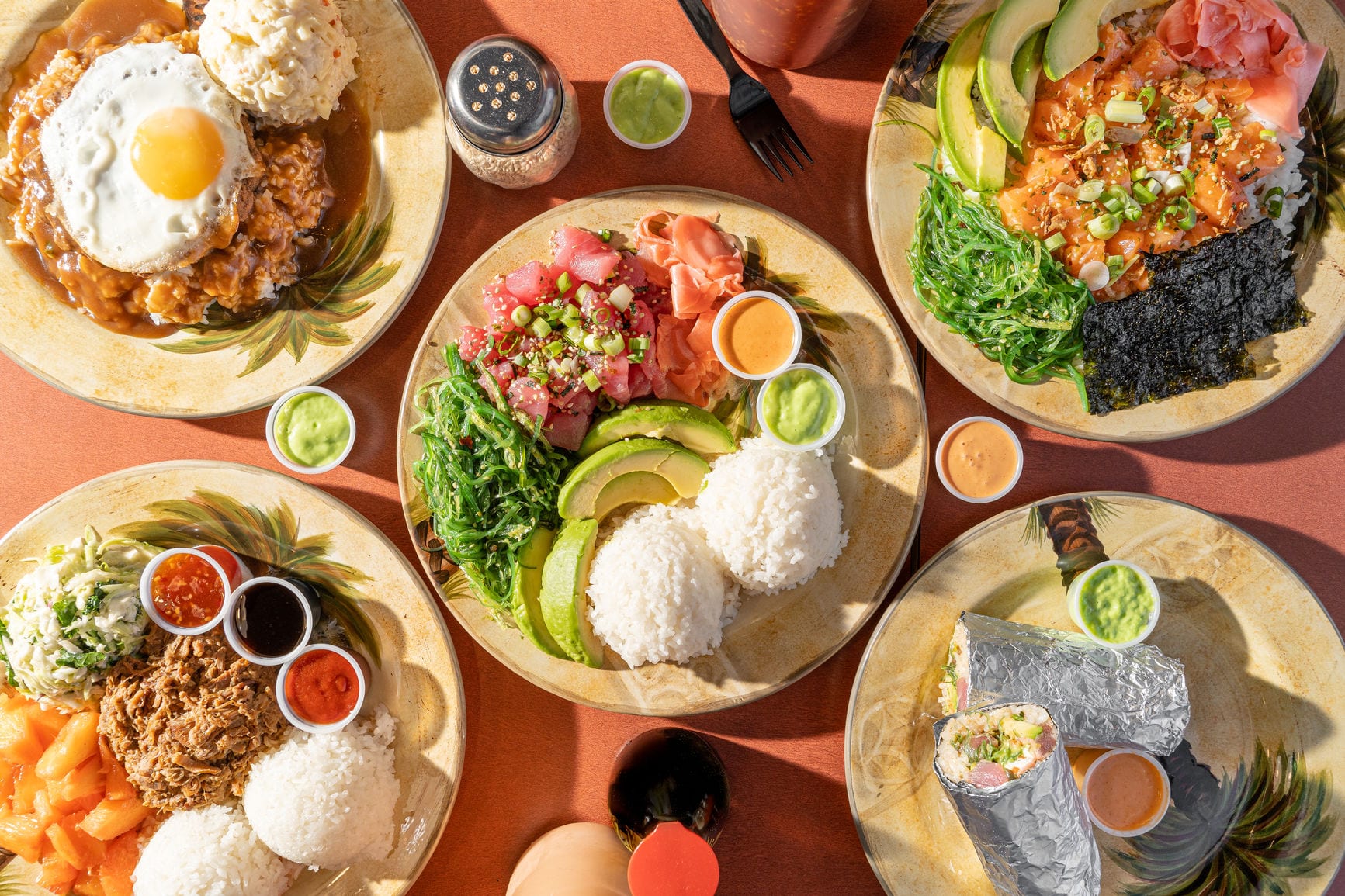Standard Polynesian meals is a colourful and numerous culinary tapestry that displays the wealthy cultural heritage and geographical influences of the Pacific islands. From conventional dishes cooked in earth ovens to fresh fusion delicacies, Polynesian meals gives a tantalizing mix of flavors, textures, and cultural importance.
The staples of Polynesian cooking come with root greens, comparable to taro and yams, recent seafood, and tropical end result. Conventional cooking strategies contain steaming, roasting, and grilling, with the “umu” or earth oven enjoying a central position in lots of Polynesian cultures.
Definition and Foundation of Polynesian Meals
Polynesian meals encompasses the varied culinary traditions of the indigenous peoples inhabiting the huge expanse of the Polynesian Triangle, stretching from New Zealand within the southwest to Hawaii within the northeast, and Easter Island within the southeast.
The origins of Polynesian delicacies will also be traced again to the Lapita folks, who migrated from Southeast Asia to the Pacific islands round 1500 BCE. Over centuries, Polynesian voyagers introduced their culinary practices and data of crops and animals to the more than a few islands they settled, resulting in the improvement of distinct regional permutations.
Ancient Influences
Polynesian delicacies has been influenced by way of a myriad of ancient elements, together with:
- Geographical Isolation:The remoteness of the Polynesian islands fostered a reliance on native assets, resulting in the improvement of distinctive culinary traditions in keeping with to be had substances.
- Cultural Change:Touch with different cultures, comparable to Melanesian and Micronesian peoples, resulted within the trade of culinary concepts and methods, enriching the Polynesian culinary repertoire.
- Eu Colonization:The coming of Eu explorers and settlers offered new substances and cooking strategies, that have been step by step integrated into Polynesian delicacies, making a fusion of conventional and fashionable flavors.
Staple Substances and Cooking Strategies: Standard Polynesian Meals
Polynesian delicacies is characterised by way of its reliance on recent, native substances and standard cooking strategies which were handed down thru generations. The principle substances utilized in Polynesian cooking come with:
- Seafood:Fish, shellfish, and crustaceans are a staple a part of the Polynesian vitamin, offering protein and crucial vitamins.
- Coconut:Coconuts are utilized in a lot of paperwork, together with coconut milk, coconut cream, and coconut oil, including taste and richness to dishes.
- Taro:A root vegetable that could be a staple meals supply, offering carbohydrates and fiber.
- Breadfruit:A starchy fruit that may be cooked in more than a few tactics, offering a supply of carbohydrates and nutritional fiber.
- Candy potato:A candy and flexible vegetable this is ceaselessly roasted, boiled, or fried.
Conventional Polynesian cooking strategies come with:
- Umu (earth oven):An underground oven used to prepare dinner meals slowly and lightly, imparting a novel smoky taste.
- Imu (pit oven):Very similar to the umu, however smaller and used for smaller amounts of meals.
- Lovo (stone oven):Heated stones are positioned in a pit, and meals is wrapped in leaves and cooked on best of the stones.
- Hangi (steam oven):A pit is dug and coated with leaves, and meals is positioned inside of and coated with extra leaves, then steam is generated by way of pouring water over sizzling stones.
Importance of the “Umu” or Earth Oven
The umu, or earth oven, holds a vital position in Polynesian tradition. This is a conventional way of cooking that has been used for hundreds of years to arrange meals for particular events and neighborhood gatherings. The umu is an emblem of neighborhood and sharing, because it calls for the cooperation of a number of people to construct and care for the hearth.
The umu additionally imparts a novel taste to meals, because the meals is cooked slowly and lightly within the underground oven. The smoky taste of the umu is very prized in Polynesian delicacies, and dishes cooked on this method are regarded as a delicacy.
Common Dishes and Cuisine
Polynesian delicacies boasts a various array of delectable dishes and cuisine, reflecting the area’s wealthy cultural heritage. From conventional staples to fresh culinary creations, Polynesian meals tantalizes style buds with its distinctive flavors and colourful presentation.
Conventional Cuisine
*
-*Poi
A Polynesian staple, poi is a thick paste created from fermented taro root. It has a relatively bitter style and is ceaselessly served as an aspect dish or accompaniment to meat and fish.
-
-*Kalua Pig
A conventional Hawaiian dish, kalua pig is ready by way of slow-roasting an entire pig in an underground oven coated with sizzling rocks. The result’s succulent, soft meat with a smoky taste.
-*Oka
A Fijian delicacy, oka is a uncooked fish dish marinated in citrus juice, coconut milk, and spices. It’s served with greens and is understood for its refreshing and tangy style.
Recent Creations
*
-*Polynesian Poke Bowl
A contemporary take at the vintage Hawaiian poke, this dish options uncooked fish marinated in a lot of sauces and crowned with greens, end result, and grains.
-
-*Taro Chips
Crispy and flavorful, taro chips are created from thinly sliced taro root this is fried till golden brown. They’re ceaselessly served with dips or as a snack.
-*Mango Sticky Rice
A well-liked dessert in lots of Polynesian international locations, mango sticky rice is made with candy glutinous rice crowned with ripe mangoes and drizzled with coconut cream.
Cultural Importance
Positive Polynesian dishes hang deep cultural importance. For instance, poi is thought of as a sacred meals in Hawaii and is ceaselessly served at ceremonial events. Kalua pig is a standard dish ready for particular occasions and is an emblem of hospitality and birthday celebration.
Oka, alternatively, is a staple in Fijian delicacies and is assumed to have medicinal homes.
Regional Permutations and Influences

Polynesian delicacies shows a captivating array of permutations throughout other island teams, reflecting the varied cultural heritage and environmental stipulations of every area.
Exterior influences, in particular from Asian and Eu cuisines, have additionally left an indelible mark on Polynesian cooking, leading to a wealthy tapestry of flavors and methods.
Regional Culinary Traditions
- Hawaii:Identified for its colourful use of unpolluted seafood, comparable to poke (uncooked fish salad), kalua pig (roasted pig cooked in an underground oven), and poi (pounded taro root).
- Tahiti:Characterised by way of its use of coconut milk and seafood, as obtrusive in dishes like poisson cru (uncooked fish marinated in citrus juice) and fafaru (fish soup).
- Tonga:Well-known for its conventional banquet referred to as ‘umu, which comes to cooking meals in an underground oven, together with dishes like red meat, rooster, and taro.
- Samoa:Identified for its staple dish of palusami (taro leaves cooked in coconut cream) and oka (uncooked fish salad).
- Cook dinner Islands:Notable for its use of fermented meals, comparable to ikamata (fermented breadfruit) and papaya salad.
Influences of Different Cuisines
Polynesian delicacies has been influenced by way of a lot of different cuisines, together with:
- Asian:Using soy sauce, ginger, and garlic, in addition to tactics like stir-frying and steaming.
- Eu:The creation of latest substances comparable to red meat, red meat, and wheat, in addition to cooking strategies like baking and roasting.
Well being and Dietary Facets

Polynesian delicacies is most often regarded as nutritious and balanced, offering crucial vitamins for general well being and well-being.Polynesian staples like root greens, end result, and fish are wealthy in nutrients, minerals, and antioxidants. Root greens like taro and yams are very good resources of complicated carbohydrates, nutritional fiber, and nutrients B and C.
Culmination comparable to bananas, papayas, and pineapples supply considerable quantities of nutrients A, C, and potassium. Fish, a cornerstone of Polynesian diets, is a lean protein supply full of omega-3 fatty acids, crucial for center and mind well being.
Conventional Polynesian Substances for Medicinal Functions
Past sustenance, many conventional Polynesian substances were used for medicinal functions for hundreds of years. For instance, noni fruit, local to the islands, is assumed to have anti inflammatory and antioxidant homes and has been historically used to regard a variety of diseases, together with ache, infections, and pores and skin stipulations.
Turmeric, every other commonplace aspect, possesses anti inflammatory and antimicrobial homes and has been used to regard wounds, burns, and digestive problems.
Meals in Polynesian Well being and Neatly-being, Standard polynesian meals
In Polynesian cultures, meals holds deep importance past its dietary price. Conventional Polynesian diets emphasize the significance of steadiness, selection, and moderation. Meals is ceaselessly ready the usage of recent, in the neighborhood sourced substances, maintaining their dietary integrity. Communal eating is a central side of Polynesian tradition, fostering social bonds and reinforcing the significance of shared foods and neighborhood well-being.
Cultural Importance and Social Customs

Meals holds a profound cultural importance in Polynesian society, deeply intertwined with traditions, rituals, and social interactions.
Ceremonies, Rituals, and Celebrations
Polynesian delicacies performs a pivotal position in more than a few ceremonies, rituals, and celebrations. All over sacred events, comparable to weddings, funerals, and spiritual gala’s, meals choices are made to deities and ancestors, symbolizing appreciate, gratitude, and the continuation of cultural heritage.
Social Customs and Etiquette
Polynesian eating etiquette is rooted in communal sharing and hospitality. The concept that of “feaaloafia’i,” or sharing meals, fosters a way of cohesion and reinforces social bonds. Communal feasts are commonplace, the place dishes are ready and shared amongst circle of relatives, buddies, and the neighborhood.
- Recognize for elders: It’s standard to supply the primary portion of meals to elders as an indication of appreciate.
- Avoidance of waste: Meals is thought of as a present, and it is thought of as disrespectful to waste it.
- Taboos: Positive meals is also taboo for explicit people or right through explicit classes, in keeping with cultural ideals and traditions.
Fast FAQs
What are some well-liked Polynesian dishes?
Some well known Polynesian dishes come with poi (pounded taro root), kalua pig (roasted pig cooked in an earth oven), and poke (uncooked fish salad).
How does the “umu” or earth oven paintings?
The “umu” is a standard Polynesian cooking way that comes to digging a pit within the flooring and lining it with sizzling stones. Meals is put on best of the stones and coated with banana leaves and earth, making a steamy setting that chefs the meals slowly and lightly.
What’s the cultural importance of meals in Polynesian society?
Meals holds a central position in Polynesian tradition, serving as a method of sustenance, an emblem of hospitality, and some way to connect to ancestors and the flora and fauna.

